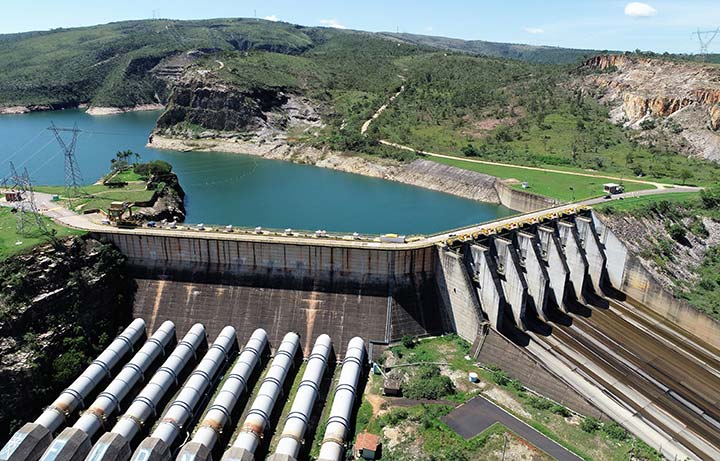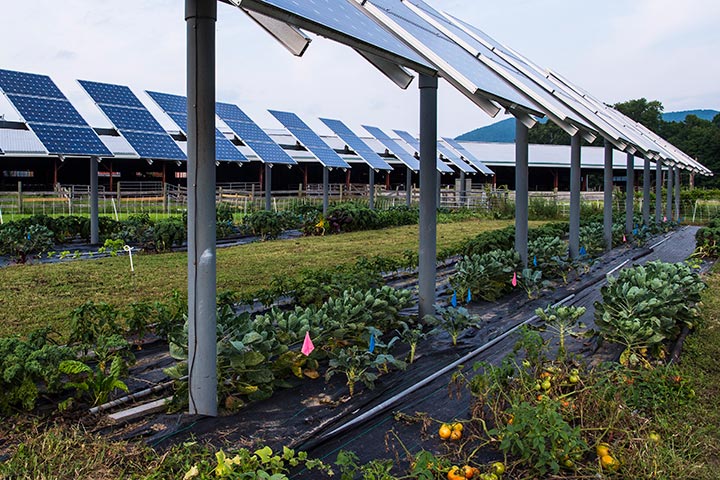Virtual Meeting Showcases JISEA's Diverse Findings in Power Systems and Industry and Agriculture
April 13, 2020—The Joint Institute for Strategic Energy Analysis (JISEA) hosted a special virtual meeting on Thursday, April 9 as a supplement to the rescheduled 2020 annual meeting. The three-hour webinar offered an insider's look at JISEA work over the past year. It kicked off with JISEA Director Jill Engel-Cox, who gave an overview of the JISEA body of work.
True to JISEA's mission, the virtual meeting featured credible, objective analysis on the entire energy system, both renewable and non-renewable. It included six presentations within two themes of Power Systems and Industry and Agriculture.
Listen to the full meeting here.
Innovative Utility Offerings at the Distribution Edge
Utility companies worldwide are shifting to put the customer at the center of what they do and compete with innovative third-party providers. This means reinventing energy services and solutions that are safe, affordable, and reliable for customers.
JISEA researchers Travis Lowder and Jeffrey Logan presented snapshots of four case studies around the world from their report, Innovative Utility Offerings at the Distribution Edge.
For example, in Japan, the utility company TEPCO offers the "Elderly Care Plan" to children of the elderly, who account for a large portion of the Japanese population. For about $25 a month, individuals can see their elderly parents' appliance usage to know if they're staying healthy. The mechanism for disaggregating this appliance information does not require a smart meter and opens the door to new ways for gathering energy usage data. "We really liked learning about this innovative program," Logan said.
In Canada, a pilot project wirelessly connects streetlights to only turn on when a pedestrian or driver approaches. It resulted in substantial energy savings and reduction in maintenance costs.
Read about all four case studies in their presentation.
Options for Resilient and Flexible Power Systems in South America

Several South American countries have traditionally relied on large renewable hydropower but now face increasingly variable hydrological conditions with events like El Niño and La Niña and growing penetration of variable renewable energy.
The shifting energy landscape was the impetus for the report, Options for Resilient and Flexible Power Systems in South America, by JISEA researchers Jeffrey Logan and Josue Campos do Prado. They studied Argentina, Brazil, Chile and Colombia.
Logan and Prado presented an overview of opportunities for each country to ensure reliable, affordable, resilient, and sustainable electricity for their people, identifying natural gas as an increasingly important option for better flexibility. An overview of the findings is available here.
Each country faces unique challenges and barriers to greater renewables adoption. For example, in Argentina, the Vaca Muerta shale formation holds great potential for natural gas but infrastructure challenges might prevent the market from growing. "Policy and market mechanisms are not developed yet, so there is a lot of room for opportunity," Prado said. Learn more in the presentation.
Integrated Model of Natural Gas Pipelines and the Electricity Grid
The natural gas and electricity sectors are becoming increasingly reliant on one another. Natural gas accounts for more than 40% of U.S. power generation plus is used for heating and industrial purposes. "This, along with growing wind and solar, means a very different power sector than 10 to 20 years ago," said Bri-Mathias Hodge, JISEA researcher.
Natural gas and power systems weren’t built to coexist, though. For example, during the 2014 Polar Vortex, electricity demand and natural gas consumption increased so much that power plants couldn’t meet their usual schedule and the delivery of electricity was delayed.
Bri-Mathias Hodge is leading consortium-funded research at JISEA to better understand how to maximize power reliability while minimizing cost within the natural gas-electric interface.
In the current study (report coming soon), they modeled three levels of coordination between the two systems, from least to most interconnected: power system only, co-simulation, and coordination.
Then, using data from the Colorado gas network, they studied how the power and natural gas systems respond in the three levels of coordination during the highest natural gas demand times of the year. Findings reveal that the coordination framework brings great potential for flexibility and cost reduction. By exchanging information between the two large infrastructure systems, it allows for more efficient utilization of the resources.
Read more in his full presentation. Follow JISEA's social media and subscribe to the newsletter to learn about the natural gas-electricity interface study once the report is published.
Renewable Energy in Mining
Mine operators are becoming more interested in incorporating renewables into their operations to help solve challenges they’re facing today, like rising energy costs, volatile fuel prices, and emissions.
"Renewable energy is ready-made to step in and solve some of these challenges, but there are barriers that could prevent renewables integration," said Travis Lowder, JISEA researcher.
He and Tisi Igogo have taken on this topic to identify opportunities and challenges for the mining industry (publication coming soon).
Renewable energy could help mine operations by supplying electrical loads, replacing diesel-fired loads, generating "green" hydrogen, and producing process heat. At the same time, the variability of wind and solar generation, conflicting business models, limited knowledge of renewables within the mining sector, land constraints, and technical barriers all pose challenges to adopting these technologies.
There is no one-size-fits-all solution and further research and development is needed for several of these challenges, Lowder expressed in the presentation. Learn more in the full presentation. Lowder and Igogo are also seeking participants to join the working group. If interested, please email [email protected].
LED Lighting: A Global Enterprise

Light-emitting diodes (LEDs) have overtaken conventional lighting. Because of their growing prominence, JISEA researchers conducted techno-economic analysis of LED luminaires to better understand the manufacturing supply chain and how advances in LEDs can incentivize adoption and spark significant domestic manufacturing gains.
JISEA researcher Samantha Reese presented on the approach and findings, published in Lighting Research & Technology.
Using bottom-up cost modelling, they evaluated the value added along the supply chain of LED luminaires. Coupling the results with analysis of shipping cost and time, they analyzed how advances in LEDs could impact manufacturing even if upstream products are produced in other economies.
The researchers concluded that LED integrated luminaires offer a win-win opportunity for both energy consumption and economics. The adoption of LED luminaires reduces the required amount of energy needed for lighting and allows for domestic manufacturing value chain, ultimately benefiting domestic economies. See the full presentation here.
Spanning the Nexus: Integrated Energy Research on Agriculture and Water Challenges

Vegetables grow under PV arrays at a test plot in Massachusetts as part of the InSPIRE project. Photo by Dennis Schroeder, NREL.
Utility-scale solar installations continue to increase but traditional ground-mount installations take up land. How can co-locating solar and agriculture benefit the land, ecosystems, and farmers?
JISEA researchers Jordan Macknick and James McCall presented on the growing co-location of solar and agriculture. Through their InSPIRE project, they're testing various configurations of solar projects within agricultural operations to provide more energy, increase crop yields, redistribute water, and more.
For example, one of their case studies in Arizona shows that growing tomatoes plants under solar panels provides three times the yield, requires one-third of the water, and results in 2% higher solar energy output. "The findings are really interesting. This work is the first of its kind," Macknick said. Learn more in the full presentation.
In the second part of the presentation, they announced a five-year $100 million Energy-Water Desalination Hub project from the Department of Energy's Advanced Manufacturing Office to study early-stage research and development on water treatment technologies, including produced water from oil and gas operations. To learn more about this work and be involved in the project, please reach out to [email protected].
Back to JISEA News >
